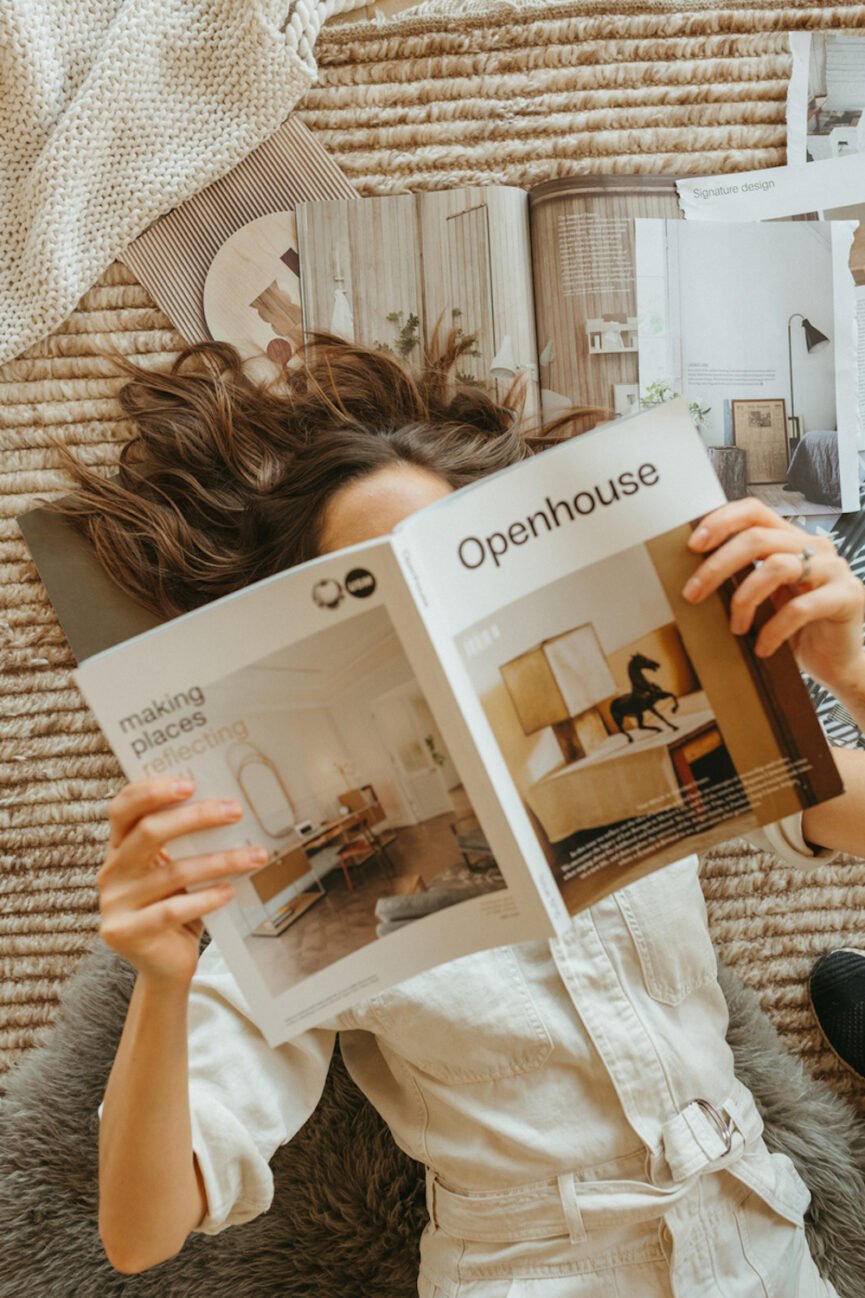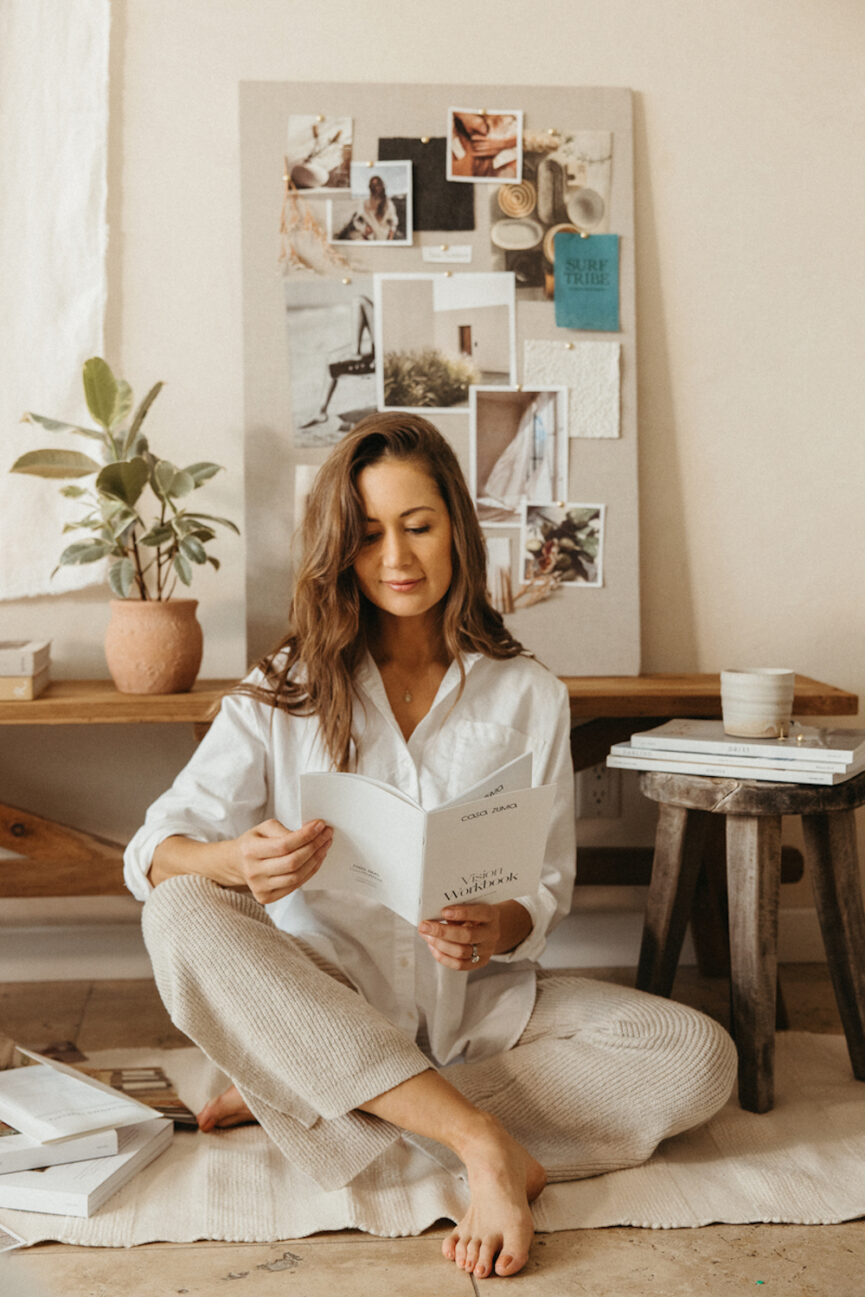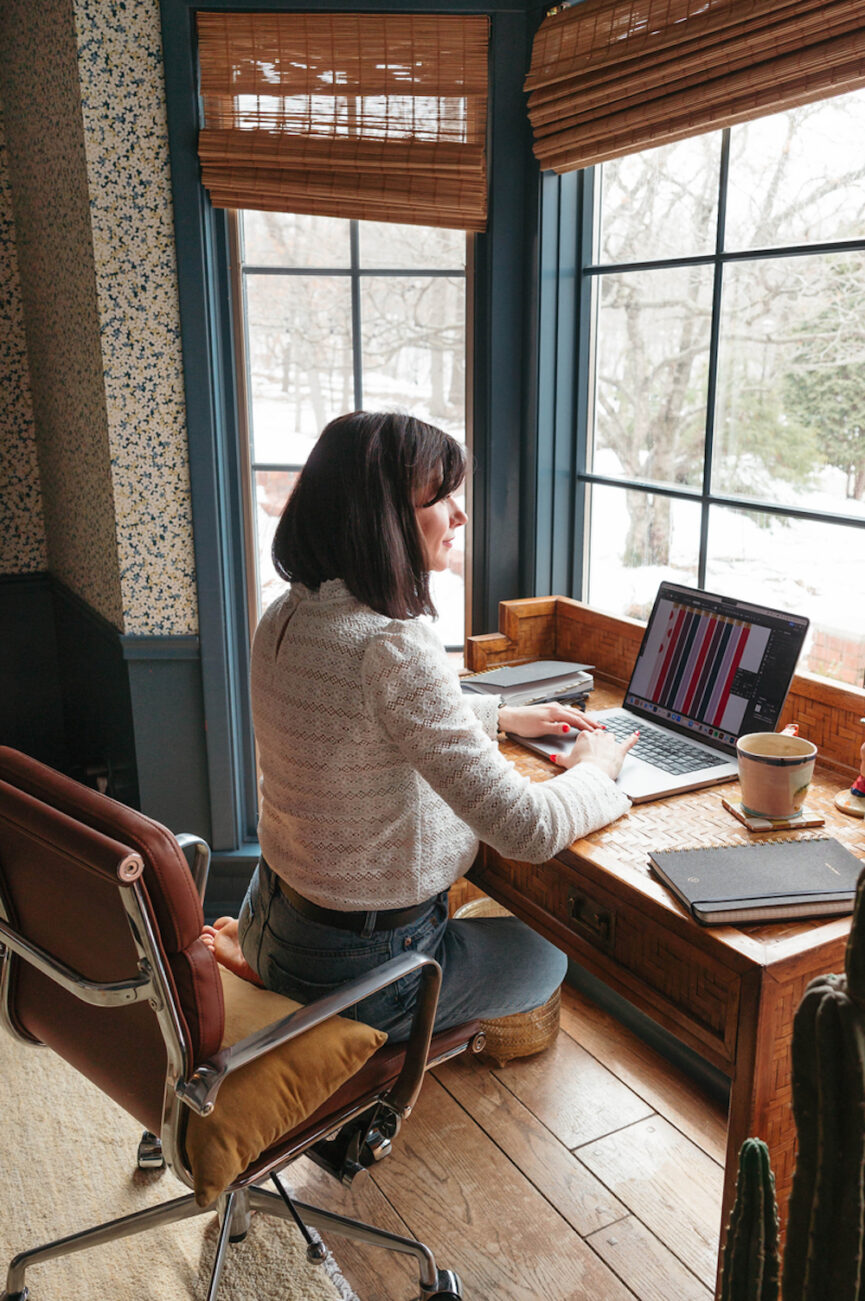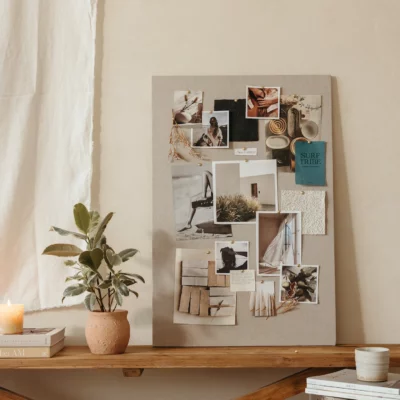We’re several weeks into 2024, and y’all—my vision board is vision board-ing. Already, many of the intentions I set into place have taken shape, entering my life in surprising and unexpected ways. With my collaged Canva board set as my desktop, it’s an inspiring delight to encounter my hopes, dreams, and intentions as I start my work day. There’s a general theme of travel and creative experiences—centering my year on a life shaped by expanding my world in both a figurative and literal sense. I connected with the visuals organically, selecting words and images from Pinterest that instilled a certain level of energy within me. But I get it—sometimes, without vision board ideas to guide your way, it can be hard to know where to start.
As with many things, the first steps present the ultimate challenge. Where do I go from here? After all, a vision board—whether physical or digital—is built from a blank slate. It’s a careful dance, navigating the tension between wanting to explore your curiosities freely and needing a framework from which to begin. Thankfully, the following vision board ideas understand and allow for that process to unfold naturally. Because it’s a deeply personal exploration, and the final product should represent the journey you took to get there.


How to Form Your Vision
Our vision board serves as a foundation for the direction of our year. Here at Camille Styles, our community is connected by intention—a desire to live on purpose. It’s the difference between asking why something is happening to me versus for me.
Having a vision orients you to the opportunity within everything, implying that every moment can be part of a larger plan for our lives, both the challenges and wins.
So how do you create a vision? Begin by downloading the 2024 Vision Workbook. Its 23 pages guide you through the process of forming your vision for your four Life Spaces—how you wish to design your year across your Dream Life, Well-Being, Relationships, and Career & Creativity. It asks you to get specific about you want, and through journaling and image curation, defining what a beautiful, vibrant life looks like for you in 2024.
Today, we’re chatting through one of the ways you can grow deeper in this process: by tailoring your vision board to your 2024 goals. Because a vision board—while aesthetic—isn’t just decor. It’s an action plan to take you from Point A to Point B. Let’s dive in.


7 Vision Board Ideas to Manifest Your Dream Life
Sometimes, you create a vision board that encompasses all areas of your life, representing your goals in a holistic sense. But there are other times when a more focused vision board may be more appropriate. If that sounds like what you need, keep reading—and let these vision board ideas inspire your best life.
Learning
I’m grateful that more of us are beginning to understand: you don’t need to be enrolled in a specific program or be a certain age to learn new things. Truly, claiming yourself a “student” is more of a mindset than a status. Reflect on all the ways you want to grow and expand your mind and capabilities this year. Center in on what feels important to you and connect with the visuals that represent exactly that.
Reflection questions:
- Are there continuing education courses offered in your area or online that you’d like to take?
- What skills do you want to build? What have you always wanted to be an “expert” in?
- Are there books, movies, or other areas of culture that you’d like to dive into deeper?
Home
Many of us make the mistake of believing that our home will one day reach a place where it feels finished—complete. But as is true of ourselves, the spaces we inhabit are constantly shifting to support our tastes and the ebb and flow of our lives. Your desires for your home might not even involve a weeks-long reno. Instead, you might find in reflecting on your space and by creating your vision board, that it could be just a simple switch-up in your cleaning routine that accomplishes your goals.
Reflection questions:
- How would you like your home to look by the end of the year?
- How would you like your home to feel?
- What projects do you want to accomplish?


Wellness
Something I love about the term wellness is that it’s all-encompassing, reaching across all areas of health to also define how we want to feel and show up every day. And thankfully, there’s a collective shift away from thinking of wellness solely in an external sense and embracing the habits and routines that nurture our minds and bodies best. PSA: That looks different for everyone. Perhaps a friend feels most energized when she eats grain-free, or you’re finding that a sober-curious lifestyle helps you maintain a clear mind and stable mood. Commitment to follow the wellness rituals that support you in stepping into every moment as the person you want to be.
Reflection questions:
- Does my current fitness routine make me feel energized, clear-headed, and strong? What workouts am I curious about and would like to try?
- Assess your relationship with food. Do you practice mindful eating? Are there foods you’d like to incorporate more of into your day-to-day? Could you use the support of a professional to design a supportive nutrition plan?
- How is your mind? Are there areas of your mental health that call to be nurtured?
Travel
It’s a cliché for a reason: travel is one of the most profound tools we have to amass new experiences and expand our conception of the world. And this doesn’t happen on big trips alone. I’ve found that even a weekend away can reset my perspective and give me that fresh start feeling. Sometimes, you’ll find that that’s exactly what you need.
Reflection questions:
- Reflect on your ideal trip. Are you traveling by yourself? Do you have to fly or would you prefer driving? What is the intention behind your trip?
- Be realistic about your budget. How much money can you set aside for travel this year?
- What environments, countries, and areas of the world have always felt pulled toward?
Style
Some #ootd’s just happen—most do not. They take curating a style that feels distinctly you and building a wardrobe around how you want to feel in your clothes each day. Comfort can be key, certainly, but fashion can also be a vehicle for self-expression. Camille wrote about this very topic in a recent issue of her Breathing Space newsletter, reflecting on the importance and process of consciously choosing your personal style. Closet clean-outs can do wonders for your relationship with your home, but they also help you start fresh from square one. From there, you can build a wardrobe—and style—you love. What’s more, you won’t be tempted to make spur-of-the-moment purchases that you’ll regret shortly thereafter.
Reflection questions:
- What do you want your clothes to communicate or express? Jot down a few words you’d like to define your style.
- Are there clothes you’re holding onto that you no longer wear? Why might you be hesitant to get rid of them?
- If you could only build a 10-piece capsule wardrobe, what items and styles would you prioritize?


Career and Personal Development
I’m lucky to acknowledge that I’ve secured the fabled dream job. Each day, not only do I feel that I’m working toward something that aligns with my values, but I find my tasks interesting and supportive of how I want to grow in my career. Reflect on what that would look like for yourself. And as is true for many of these areas of your life, making that a reality might not require a significant shift (i.e., perhaps you don’t have to undergo the dreaded job search).
Instead, reflect first on what you have control over in your career. Maybe you could enroll in a virtual program that would connect you with the skills you need to be promoted. Or perhaps you could have a conversation with your manager about projects you’d like to support or teams you’d like to collaborate with. Start small and reflect on the actionable steps that are yours to take.
Reflection questions:
- Does my current job or everyday obligations align with my values?
- What would it feel like to experience flow in my everyday work?
- What does your ideal daily routine look like?
Money
With social media making few topics taboo anymore, money is something that we (particularly women) have been liberated to discuss openly and freely. Alongside this, we’ve started to reframe money as a tool, a reality in our world that helps us get where and what we need. As such, it’s important to both visualize and list out how we want to grow in this realm. Money can be a point of connection to lean deeper into other areas of your life—for example, your home, travel, and even your style. Making a game plan for leveling up your financial wellness can have positive implications for everything else.
Reflection questions:
- What does your ideal lifestyle look like? Where do you live? Who do you live with?
- How would you live if you were entirely debt-free? How can you make paying down that debt a priority in your life this year?
- What big purchases would you like to make this year? How would they positively contribute to your life?
Looking for more vision board ideas? Watch the video below where Camille walks you through how she created her vision board for 2024.






